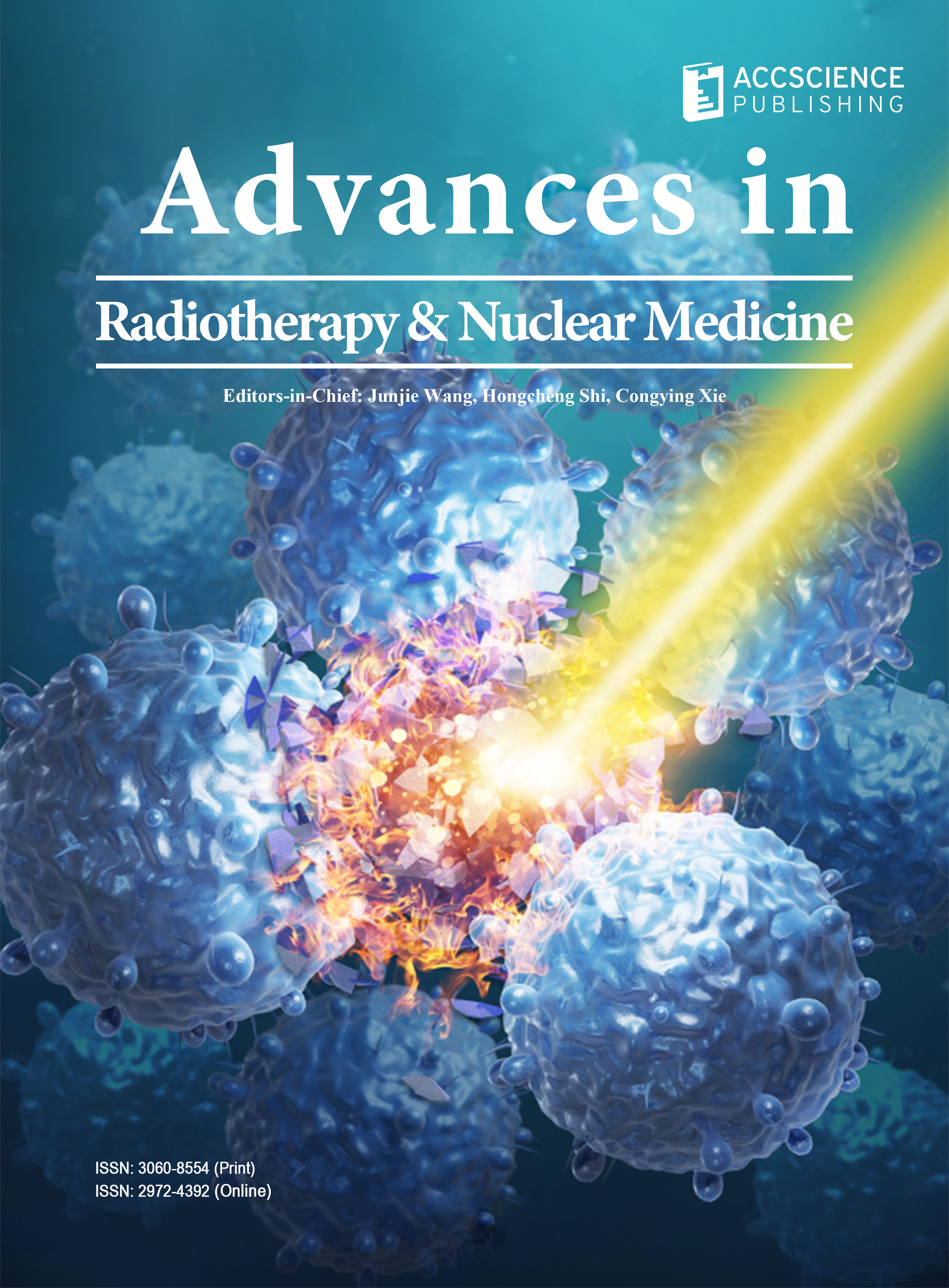Use of moderate hypofractionated radiotherapy in craniopharyngioma

External beam radiation therapy is used for inoperable, residual, or recurrent disease after surgery for craniopharyngioma. At present, conventional radiotherapy, hypofractionated radiotherapy (HFRT), and stereotactic radiotherapy (SRT) are available options. However, there are limited data on HFRT and SRT using modern radiotherapy (RT) devices. This paper presents the findings of a retrospective study conducted at a single institution based on our long-term experiences with eight craniopharyngioma patients who had underwent RT. The median time between the operation and RT was 8.5 months (ranging from 2.6 to 11 months). Six patients were treated with CyberKnife® (CK®), and two were treated with Tomotherapy® (HT®) using the helical intensity-modulated RT technique (H-IMRT). Patients treated with HT received a mean of 50 and 55 Gy RT in 25 and 30 fractions (conventional RT scheme), respectively. Out of the six patients treated with CK, three received a mean of 22 – 25 Gy in five fractions, and the other three received a mean of 40 – 42 Gy in 15 fractions. The median follow-up was 6 years (range: 2 – 9.1 years), and no progression was observed. The 3-year overall survival (OS) and progression-free survival (PFS) rates were 85.7% and 85.7%, respectively. OS and PFS at 5 years were likewise 85.7% and 85.7%, respectively. Of the two patients (25%) who were alive with a complete response, one received 50 Gy in 25 fractions with H-IMRT, and the other received RT through CyberKnife with five fractions. Five patients (62.5%) were alive with stable residual disease and one patient had died with a complete response. HFRT may be considered as a preferable option in the treatment of craniopharyngioma, in addition to conventional or SBRT treatment options.
- Muller HL, Merchant TE, Warmuth-Metz M, Martinez- Barbera JP, Puget S. Craniopharyngioma. Nat Rev Dis Primers. 2019;5(1):75. doi: 10.1038/s41572-019-0125-9
- Muller HL. The Diagnosis and treatment of craniopharyngioma. Neuroendocrinology. 2020;110(9-10):753-766. doi: 10.1159/000504512
- Habrand JL, Ganry O, Couanet D, et al. The role of radiation therapy in the management of craniopharyngioma: A 25-year experience and review of the literature. Int J Radiat Oncol Biol Phys. 1999;44(2):255-263. doi: 10.1016/s0360-3016(99)00030-9
- Hoffman HJ, Da Silva M, Humphreys RP, Drake JM, Smith ML, Blaser SI. Aggressive surgical management of craniopharyngiomas in children. J Neurosurg. 1992;76:47-52. doi: 10.3171/jns.1992.76.1.0047
- Yasargil MG, Curlic M, Kis M, Siegenthaler G, Teddy PJ, Roth P. Total removal of craniopharyngiomas. Approaches and long-term results in 144 patients. J Neurosurg. 1990;73(1):3-11. doi: 10.3171/jns.1990.73.1.0003
- Weiss M, Sutton L, Marci V, et al. The role of radiation therapy in the management of childhood craniopharyngioma. Int J Radiat Oncol Biol Phys. 1989;17(6):1313-1321. doi: 10.1016/0360-3016(89)90543-9
- Tsugawa T, Kobayashi T, Hasegawa T, et al. Gamma knife surgery for residual or recurrent craniopharyngioma after surgical resection: A multi-institutional retrospective study in Japan. Cureus. 2020;12(2):e6973. doi: 10.7759/cureus.6973
- Marinova L, Christosova I. Radiotherapy of craniopharyngioma in childhood; Single institution experience. J BUON. 2003;8(1):61-64.
- Schulz-Ertner D, Frank C, Herfarth KK, Rhein B, Wannenmacher M, Debus J. Fractionated stereotactic radiotherapy for craniopharyngiomas. Int J Radiat Oncol Biol Phys. 2002;54(4):1114-1120. doi: 10.1016/s0360-3016(02)03029-8
- Flickinger JC, Lunsford LD, Singer J, Cano ER, Deutsch M. Megavoltage external beam irradiation of craniopharyngiomas: Analysis of tumor control and morbidity. Int J Radiat Oncol Biol Phys. 1990;19(1):117-122. doi: 10.1016/0360-3016(90)90143-8
- Hetelekidis S, Barnes PD, Tao ML, et al. 20-year experience in childhood craniopharyngioma. Int J Radiat Oncol Biol Phys. 1993;27(2):189-195. doi: 10.1016/0360-3016(93)90227-m
- Iannalfi A, Fragkandrea I, Brock J, Saran F. Radiotherapy in craniopharyngiomas. Clin Oncol (R Coll Radiol). 2013;25(11):654-667. doi: 10.1016/j.clon.2013.07.005
- Regine WF, Mohiuddin M, Kramer S. Long-term results of pediatric and adult craniopharyngiomas treated with combined surgery and radiation. Radiother Oncol. 1993;27(1):13-21. doi: 10.1016/0167-8140(93)90039-b
- Zhang C, Verma V, Lyden ER, et al. The role of definitive radiotherapy in craniopharyngioma: A SEER analysis. Am J Clin Oncol. 2018;41(8):807-812. doi: 10.1097/COC.0000000000000378
- Puget S, Garnett M, Wray A, et al. Pediatric craniopharyngiomas: Classification and treatment according to the degree of hypothalamic involvement. J Neurosurg. 2007;106(1 Suppl):3-12. doi: 10.3171/ped.2007.106.1.3
- Shi XE, Wu B, Fan T, Zhou ZQ, Zhang YL. Craniopharyngioma: Surgical experience of 309 cases in China. Clin Neurol Neurosurg. 2008;110(2):151-159. doi: 10.1016/j.clineuro.2007.10.013
- Fahlbusch R, Honegger J, Paulus W, Huk W, Buchfelder M. Surgical treatment of craniopharyngiomas: Experience with 168 patients. J Neurosurg. 1999;90(2):237-250. doi: 10.3171/jns.1999.90.2.0237
- Szeifert GT, Sipos L, Horváth M, et al. Pathological characteristics of surgically removed craniopharyngiomas: Analysis of 131 cases. Acta Neurochir (Wien). 1993;124(2-4): 139-143. doi: 10.1007/BF01401137
- Hoffman HJ. Surgical management of craniopharyngioma. Pediatr Neurosurg. 1994;21(Suppl 1):44-49. doi: 10.1159/000120861
- Honegger J, Grabenbauer GG, Paulus W, Fahlbusch R. Regression of a large solid papillary craniopharyngioma following fractionated external radiotherapy. J Neurooncol. 1999;41(3):261-266. doi: 10.1023/a:1006112600805
- Landolt AM, Zachmann M. Results of transsphenoidal extirpation of craniopharyngiomas and Rathke’s cysts. Neurosurgery. 1991;28(3):410-415. doi: 10.1097/00006123-199103000-00012
- Graffeo CS, Perry A, Link MJ, Daniels DJ. Pediatric craniopharyngiomas: A primer for the skull base surgeon. J Neurol Surg B Skull Base. 2018;79(1):65-80. doi: 10.1055/s-0037-1621738
- Masson-Cote L, Masucci GL, Atenafu EG, et al. Long-term outcomes for adult craniopharyngioma following radiation therapy. Acta Oncol. 2013;52(1):153-158. doi: 10.3109/0284186X.2012.685525
- Brown SA, Jaboin JJ, Eng TY, Bazan JG, Thomas CR Jr. Nonmalignant diseases. In: Halperin EC, Wazer DE, Perez CA, Brady LW, editors. Perez and Brady’s Principles and Practice of Radiation Oncology. 7th ed., Ch. 95. Philadelphia, PA: Wolters Kluwer; 2018.
- Merchant TE, Kiehna EN, Sanford RA, et al. Craniopharyngioma: The St. Jude Children’s research hospital experience 1984-2001. Int J Radiat Oncol Biol Phys. 2002;53(3):533-542. doi: 10.1016/s0360-3016(02)02799-2
- Lee M, Kalani MY, Cheshier S, Gibbs IC, Adler JR, Chang SD. Radiation therapy and CyberKnife radiosurgery in the management of craniopharyngiomas. Neurosurg Focus. 2008;24(5):E4. doi: 10.3171/FOC/2008/24/5/E4
- Conti A, Pontoriero A, Ghetti I, et al. Benefits of image-guided stereotactic hypofractionated radiation therapy as adjuvant treatment of craniopharyngiomas. A review. Childs Nerv Syst. 2019;35(1):53-61. doi: 10.1007/s00381-018-3954-z
- Albano L, Losa M, Flickinger J, Mortini P, Minniti G. Radiotherapy of parasellar tumours. Neuroendocrinology. 2020;110(9-10):848-858. doi: 10.1159/000506902

